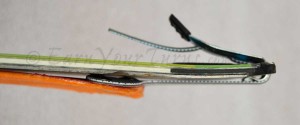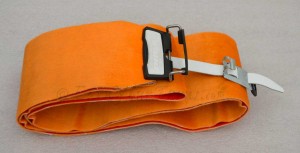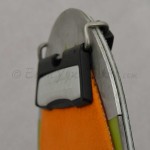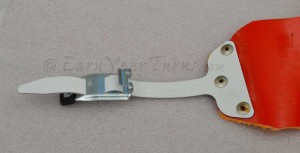No doubt you have noticed that as the width of your skis has grown steadily, the strength needed to deal with climbing skins has grown too, not linearly, but geometrically. In simple terms, fat climbing skins are a royal pain to deal with, whether peeling them apart after storing, or trying to apply those stupid skin saver strips on a windy ridge after a climb.
Glueless glue: Holding power without being tacky
You’ve probably heard about the new “glueless” climbing skins. Except for Clip-Skins, this new generation of climbing skins aren’t really glueless, they simply use a different formula for their adhesive, one that is based on silicon, rather than a solvent based glue. Compared to regular climbing skin glues, silicon based adhesives are significantly less tacky, but that doesn’t mean they won’t stick to your skis. They rely on pressure and sealing out air and moisture to improve contact strength, not exclusively how sticky the glue is.Availability
Gecko and High Trails use a similar “glueless” formula. At the moment, neither are readily available in the US, though they are in Europe. Unlike those brands, Volkl has a fantastic distribution network already established and if your local Volkl dealer isn’t carrying them, it should be a simple task to obtain a pair. If they’re a backcountry shop, odds are they’re in stock.
Field Results
Based on a short two-month window of testing last season, these are arguably the best silicon adhesive climbing skins I’ve used. Mind you, any silicon-adhesive climbing skins is a whole order of magnitude easier to manage than traditional skins. When stuck together, glue-to-glue, even after long term storage at room temperature they peel apart easily when you are ready to put them on your skis.
If you like rippin’ the hide at the top of a climb without taking your skis off, it won’t matter whether your skis are 90mm underfoot or 120mm underfoot, you’ll be able to pull these skins from your skis without dislocating your shoulder.

The tail clip hugs the tail of your ski well but 1) it doesn’t adjust easily and 2) adds thickness (drag) at the tail.
One other benefit of this adhesive is how easily they can be cleaned off if you drop them in the dirt. First, it won’t stick to the glue like traditional skin glue. More importantly, even if you manage to step on them in the dirt, the dirt can be removed by gently brushing it off in water.
Grip and Glide
In terms of grip and glide, Volkl’s Vacuum Climbing Skins are on par with other brands. The pair I tested was a 65/35 nylon/mohair blend. It had great grip and decent glide. A pure mohair would probably glide better, but for typical recreational ski touring they’re as good as any other good quality climbing skin.
The tip and tail kit that Volkl provides are adequate, but they don’t set any new standards of convenience or simplicity. If you have Volkl skis you can get these skins with a keyed tip clip that mates with the Volkl tip hole in their touring skis, but then you must take your skis off to remove the skins. The generic tip loop from Volkl is definitely good enough for most skis, but the tail hook is lame. It rivets on, adding extra thickness at the tail which can affect glide. It is also difficult to adjust the length on the tail.
Available pre-trimmed for the BMT series, or V-Werks Katana 112, or as a universal climbing skin that you trim yourself. In the latter case, I recommend also substituting an STS tail kit.
Conclusion
If you’re tired of fighting with the glue on your fat climbing skins, Volkl’s Vacuum Climbing Skins should be on your short list of equipment to upgrade to this season. The one thing that is unknown is how this new glueless glue will fare over time. Gecko’s formula left a residue after about 18 months. Volkl’s version feels different, and has undergone more rigorous testing before being brought to market. Only time will tell if that is true.
Volkl
Universal Vacuum Climbing Skins
MSRP: $239
Lengths available: 120mm wide X 200cm long
Wider Universal skins available: 130mm, 140mm, 150mm (add $20)
Pre-trimmed BMT Series Vacuuum Skins
MSRP: $239
© 2014




8 pings
Skip to comment form